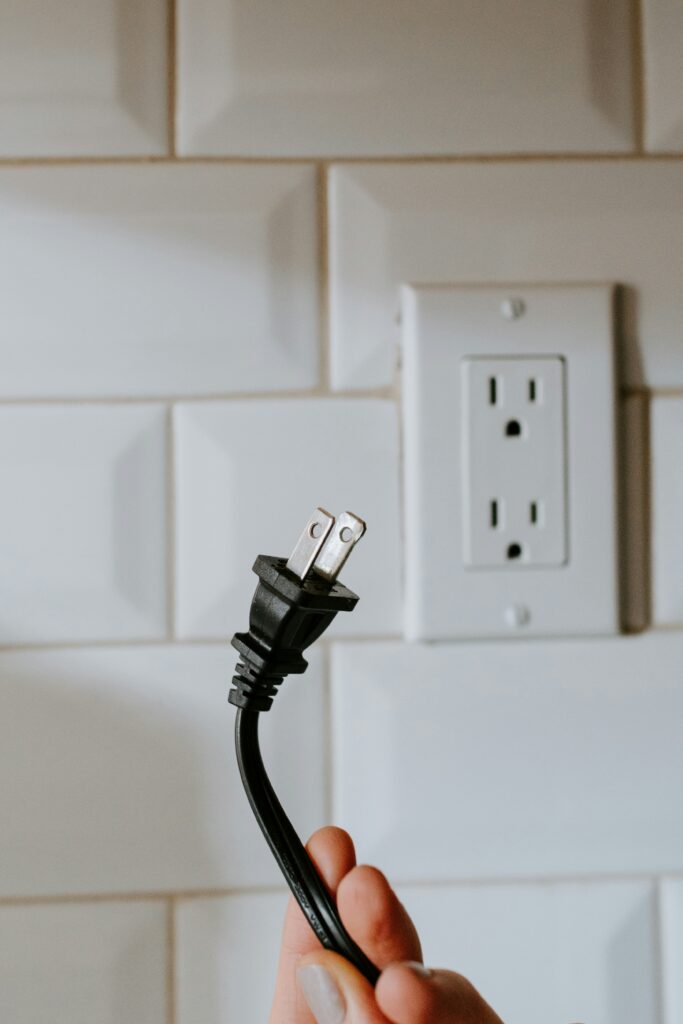If you’re the proud owner of an electric bike and find yourself wondering how to keep that battery charged, look no further! We’ve got you covered with all the tips and tricks you need to know. Whether you’re a seasoned rider or just starting out, understanding how to charge your electric bike battery is essential in ensuring a smooth and continuous ride. From the different charging methods available to maximizing battery life, this article will guide you through the process step by step. So, let’s rev up those batteries and get ready to hit the road!

1. Understanding Your Electric Bike Battery
Riding an electric bike can be a convenient and eco-friendly way to navigate through the city streets or explore the great outdoors. Understanding how to properly charge your electric bike battery is essential for maximizing its lifespan and ensuring optimal performance. In this article, we will guide you through the different types of electric bike batteries, battery capacity and voltage, charging time and range, as well as the importance of a battery management system (BMS).
1.1 Types of Electric Bike Batteries
Electric bike batteries come in various types, each with its own advantages and considerations. The most common types include lithium-ion, nickel-metal hydride (NiMH), and lead-acid batteries. Lithium-ion batteries are the most popular choice due to their lightweight design, high energy density, and longer lifespan. NiMH batteries, on the other hand, offer a lower upfront cost but have a shorter lifespan. Lead-acid batteries are the least expensive option but are heavier and require more maintenance.
1.2 Battery Capacity and Voltage
Battery capacity refers to the amount of electrical energy a battery can store, typically measured in Ampere-hours (Ah) or Watt-hours (Wh). A higher battery capacity means you can ride for longer distances before needing to recharge. Voltage, on the other hand, is the measure of electrical potential energy provided by the battery. Understanding the battery capacity and voltage of your electric bike is important for estimating its range and ensuring compatibility with the charger.
1.3 Charging Time and Range
The charging time of an electric bike battery depends on its capacity, the type of charger used, and the level of charge when you begin charging. Typically, a fully discharged battery may take several hours to recharge, while partially discharged batteries require less time. It’s essential to plan your charging routine accordingly to ensure your battery is ready when you need it. Additionally, understanding your electric bike’s range, which is the distance it can travel on a full charge, can help you plan your rides more effectively.
1.4 Battery Management System (BMS)
A battery management system (BMS) plays a crucial role in optimizing the performance and lifespan of your electric bike battery. It helps regulate charging and discharging, monitors cell temperature and voltage levels, and protects the battery from overcharging, overheating, and deep discharges. The BMS ensures the safety and longevity of your battery, so it’s important to choose a bike with a reliable BMS or consider installing one if your bike doesn’t already have it.
2. Preparing for Battery Charging
Before you begin charging your electric bike battery, there are a few important steps to take to ensure a safe and efficient charging process.
2.1 Finding a Suitable Charging Location
Choose a well-ventilated area that is free from flammable materials and away from direct sunlight. It’s best to charge your battery in an open space where air can circulate freely and prevent any potential build-up of heat. Avoid charging in areas with high humidity or extreme temperatures, as this can negatively affect the battery’s performance and lifespan.
2.2 Using a Compatible Charger
Using a compatible charger is vital for ensuring the safe and efficient charging of your electric bike battery. Check the specifications provided by the manufacturer to ensure that the charger you are using matches the required voltage and charging mode for your battery. It’s recommended to use the charger provided by the bike manufacturer or a reputable brand to avoid any compatibility issues or damage to the battery.
2.3 Checking Battery Condition
Before charging your battery, check its physical condition for any visible damage, such as cracks or leakage. If you notice any issues, it’s important to consult a professional or contact the manufacturer for guidance. Charging a damaged battery can be dangerous and may result in further damage or even accidents. It’s better to be safe and get professional advice before proceeding with the charging process.
2.4 Ensuring Safety Measures
To ensure safety during the charging process, take the necessary precautions. Keep flammable materials away from the charging area, unplug nearby electronic devices, and ensure that there are no tripping hazards around the charging station. Always follow the manufacturer’s instructions regarding safety guidelines and never leave the battery unattended while charging. By taking these safety measures, you can minimize the risk of accidents and ensure a smooth charging experience.
3. Basic Charging Guidelines
Now that you have prepared for the battery charging process, follow these basic guidelines to ensure a successful and efficient charge.
3.1 Unplugging the Battery from the Bike
Before connecting the charger to the battery, ensure that the battery is unplugged from the electric bike. This step is essential for ensuring safety during the charging process and avoiding any potential electric shocks or damage to the bike’s electrical components.
3.2 Cleaning Battery Terminals
Regularly clean the battery terminals to remove any dirt, dust, or corrosion. Use a soft cloth or a brush to gently clean the terminals, ensuring a good connection between the battery and the charger. A clean and secure connection is vital for an efficient charging process and will help maintain the overall performance and lifespan of the battery.
3.3 Connecting the Charger to Power Source
Before connecting the charger to the battery, ensure that the charger is not plugged into a power source. This precaution prevents any electrical surges or potential issues that may occur during the connection process. Once you have verified that the charger is unplugged, proceed to connect the charger to a suitable power source, such as a wall outlet or power strip.
3.4 Plugging in the Charger to the Battery
With the charger connected to the power source, carefully plug the charger into the battery. Ensure that the connection is secure and that the charger is properly aligned with the charging port. A loose connection can cause charging issues or damage the battery. Once the charger is securely plugged in, you can turn on the power source to begin the charging process.
4. Understanding Charging Modes
Electric bike batteries offer different charging modes, each serving a specific purpose. Understanding these modes can help you choose the most appropriate charging option for your needs.
4.1 Normal Charging Mode
The normal charging mode is the standard mode for charging your electric bike battery. It provides a balanced and gradual charge, ensuring the longevity and efficiency of the battery. Normal charging is suitable for most charging scenarios and is the recommended mode for regular daily use.
4.2 Quick Charging Mode
If you need your battery to charge quickly, the quick charging mode can be used. This mode delivers a higher current to the battery, accelerating the charging process. However, frequent use of quick charging mode can impact the overall lifespan of the battery. It’s best to reserve quick charging for situations when you need a rapid charge, but not as a regular charging routine.
4.3 Trickle Charging Mode
Trickle charging mode is a lower current charging option that is used for maintaining the battery’s charge level when not in use for an extended period. It prevents the battery from discharging fully and helps preserve its capacity. Trickle charging is often used during storage or when the battery is not being actively used.

5. Charging Safety Tips
Charging your electric bike battery safely is of utmost importance to protect yourself, your bike, and your battery. Here are some tips to ensure a safe charging experience:
5.1 Avoiding Extreme Temperatures
Extreme temperatures can negatively impact the charging process and the overall performance of the battery. Avoid charging in extremely hot or cold environments, as this can affect the battery’s charging speed and capacity. Keep the charging area at moderate temperatures to ensure safe and efficient charging.
5.2 Keeping the Charger Away from Water
Water and electricity do not mix well, so it’s crucial to keep your charger and the charging area dry. Avoid charging your battery in wet or humid conditions, and ensure that the charger is protected from any potential water exposure. Moisture can damage the charger and pose a safety hazard.
5.3 Monitoring the Charging Process
While it may be tempting to leave your battery charging unattended, it’s essential to monitor the charging process periodically. Check for any signs of overheating, unusual noises, or smells. If you notice anything out of the ordinary, immediately disconnect the charger and consult a professional.
5.4 Avoiding Overcharging
Overcharging your electric bike battery can lead to reduced battery life and potentially cause damage. It’s important to follow the manufacturer’s recommendations for charging time and avoid leaving the battery on the charger for an extended period after it reaches full charge. Disconnect the charger as soon as the battery is fully charged to prevent overcharging.
6. Charging Dos and Don’ts
To maximize the lifespan and performance of your electric bike battery, it’s important to follow some charging dos and don’ts.
6.1 Do Maintain Recommended Charging Cycles
Electric bike batteries have recommended charging cycles provided by the manufacturer. It’s important to adhere to these cycles and not let the battery completely discharge before recharging. Regularly top up your battery or charge it when it reaches a certain level to maintain its health and longevity.
6.2 Do Store Battery at Optimal Charge Level
If you need to store your electric bike battery for an extended period, it’s recommended to store it at a specific charge level. Consult the manufacturer’s guidelines for the optimal charge level for storage. Storing the battery at the correct charge level helps prevent self-discharge and ensures that it is ready to use when you need it.
6.3 Don’t Use Low-Quality Chargers
Using low-quality chargers can be risky for your electric bike battery. These chargers may not have the necessary safety features or may deliver inconsistent charging currents, which can damage the battery. Always choose chargers from reputable brands or authorized dealers to ensure compatibility and safety.
6.4 Don’t Charge in Confined Spaces
Charging your electric bike battery in confined spaces, such as sealed containers or small rooms, can be dangerous. Heat generated during the charging process needs proper ventilation to dissipate, and confined spaces can increase the risk of overheating or potential accidents. Always charge your battery in well-ventilated areas to ensure safety.

7. Extending Battery Life
To get the most out of your electric bike battery, there are several practices you can adopt to extend its lifespan.
7.1 Avoid Deep Discharges
Repeatedly discharging your battery to a low level can reduce its overall lifespan. Try to charge your battery before it reaches a critically low level. Keeping the battery at a moderate state of charge helps prolong its longevity and maintains its performance.
7.2 Regularly Cycle the Battery
Battery cycling refers to the process of fully charging and then discharging the battery. Regularly cycling your electric bike battery helps prevent capacity loss and can improve its overall performance. Consult the manufacturer’s guidelines for the recommended number of cycles and consider cycling your battery periodically.
7.3 Storing Battery Properly
If you need to store your electric bike battery for a prolonged period, it’s essential to store it correctly. Ensure that the battery is fully charged before storing it, as a discharged battery is more susceptible to damage. Store the battery in a cool, dry place away from direct sunlight and extreme temperatures to preserve its capacity.
7.4 Avoiding Frequent Rapid Charging
While quick charging may be convenient, frequent use of this charging mode can have a negative impact on the battery’s overall lifespan. Reserve quick charging for situations when you need immediate power and avoid making it a regular charging routine. Opt for normal charging mode for most charging sessions to optimize your battery’s longevity.
8. Troubleshooting Battery Charging Issues
Despite following the proper charging procedures, you may encounter issues with your electric bike battery charging. Here are some common problems and their potential solutions:
8.1 Charger not Functioning
If your charger is not functioning, first check if it is properly plugged into a power source. Ensure that there is power in the outlet or try using a different outlet to eliminate the possibility of an electrical issue. If the charger is still not functioning, consult a professional or contact the manufacturer for further assistance.
8.2 Charging Time Taking Longer
If your battery is taking longer to charge than usual, check for any loose connections between the charger and the battery. Ensure that the charger and battery ports are clean and free from debris. If the issue persists, it may indicate a problem with the charger or battery, and it’s advisable to seek professional help.
8.3 Battery not Holding Charge
If your battery does not hold charge for a reasonable amount of time, it may be a sign of deterioration or a faulty battery. Check for any visible damage or signs of wear on the battery. Consider testing the battery with a different charger or consult a professional for further diagnosis and potential battery replacement.
8.4 Blinking/Error Indicator Lights
Blinking or error indicator lights on your charger or battery can indicate an issue with the charging process. Consult the manufacturer’s user manual or website to understand the specific meaning of the blinking or error codes. In case of persistent issues, seek professional assistance to diagnose and resolve the problem.

9. Additional Considerations for E-Bike Battery Charging
In addition to the general charging guidelines, there are a few more considerations to keep in mind for efficient electric bike battery charging.
9.1 Charging on the Go with Portable Chargers
If you frequently use your electric bike for long rides, investing in a portable charger can be beneficial. Portable chargers allow you to charge your battery on the go, extending your riding range. Ensure that the portable charger is compatible with your battery and follow the manufacturer’s instructions for safe and effective use.
9.2 Charging Multiple Batteries
If you own multiple electric bike batteries, it’s essential to understand the charging requirements for each battery. Some chargers are capable of charging multiple batteries simultaneously, while others may require separate charging sessions. Be mindful of the charging capacity and voltage requirements for each battery, ensuring that you provide the necessary charging conditions for optimal performance.
9.3 Regenerative Braking and Battery Recharging
Some electric bikes feature regenerative braking, which converts kinetic energy back into electrical energy to recharge the battery. This feature can help extend your battery’s range and reduce overall energy consumption. However, keep in mind that regenerative braking may not significantly impact the charging process, and you may still need to charge your battery through traditional methods.
9.4 Battery Replacement and Recycling
Over time, your electric bike battery may reach the end of its lifespan and require replacement. When replacing the battery, ensure that you choose a compatible replacement to maintain compatibility with your bike’s electrical system. Additionally, it’s essential to recycle your old battery responsibly to minimize its environmental impact. Contact local recycling centers or retailers that accept battery recycling to properly dispose of your old battery.
10. Conclusion
Charging your electric bike battery correctly is crucial for ensuring its longevity, performance, and your safety. By understanding different battery types, following proper charging procedures, and adopting good charging practices, you can maximize the lifespan of your battery and enjoy many hours of hassle-free riding. Remember to always consult the manufacturer’s guidelines and seek professional assistance when encountering any issues. Ride safely, charge responsibly, and enjoy the freedom and convenience of your electric bike!


